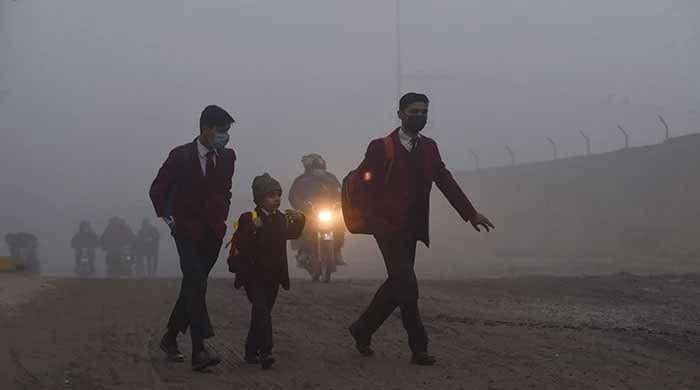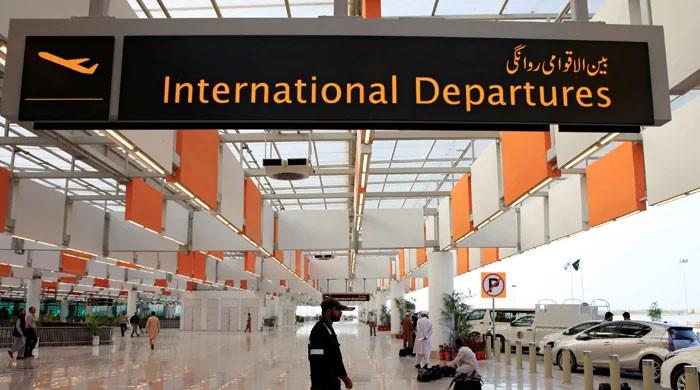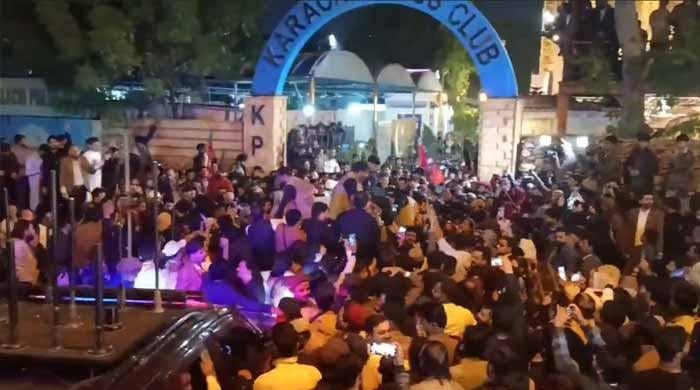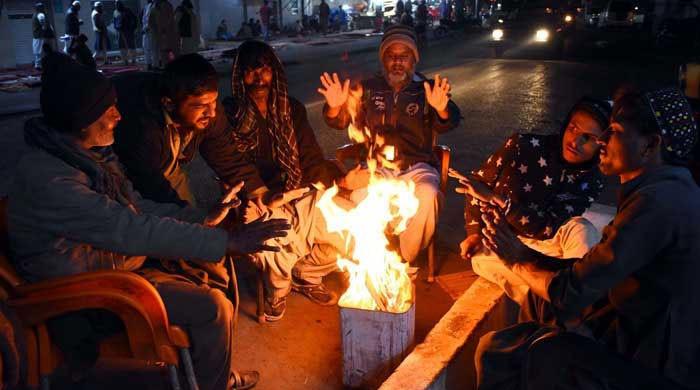Senate Elections 2021: What to expect on the big day
Lawmakers will be electing new members of the Senate of Pakistan on March 3, 2021; here's everything you can expect from the election
March 02, 2021

The Senate Election 2021 is finally upon us.
As rumours run rife of intrigue and conspiracy in the corridors of power, Geo.tv has put together this brief explainer to help make sense of what will be happening on March 3, 2021.
Senate elections are, quite understandably, a complicated thing to understand. For one, they are quite different from the 'normal' election most of us are used to — the one where we queue up at our local polling stations once every five years to vote for the parties (and candidates) of our choice.
The Senate election, on the other hand, is an exclusive affair. Only the MNAs and MPAs elected by us (the awaam) take part in the actual voting. The idea is that their votes represent the will of we, the people (but we all know that bribery and coercion sometimes have a role to play).
And while general elections are usually for National Assembly and provincial assembly representatives, Senate elections are held for four categories of seats: General, Women's, Technocrat/Ulema and Minorities seats.
Polling for general elections are held on a much wider scale, while polling for a Senate election is held separately in the four provincial assemblies, as well as the National Assembly.
Senate elections are also different from general elections in terms of the way the votes cast are counted. While votes are counted only once in a general election, in the Senate election, each vote can be 'counted' multiple times thanks to a process called 'vote transfer'.
The single transferable vote
In a general election, all votes polled are collected and counted, and whoever gets the most votes is declared the winner. It does not matter who gets the second most or third most (and so on) number of votes. All votes that are not cast to the winner, therefore, get 'wasted'. This system is called the 'first past the post' system.
In the Senate election, the 'single transferable vote' system ensures that none of the votes get wasted. Under this system, each vote has a value of 100 points, which can be divided among multiple candidates based on a list of 'preferences' marked by the voter on their ballot paper.
The preference list shows how the points of each vote should be distributed among the candidates in order of priority.
Due to this system, a voter can vote for multiple candidates on a single ballot. Simply, the voters rank each candidate by writing 1,2 and 3 against the names of each candidate on the ballot paper.
To win, each candidate needs a certain number of points, which is called the quota. If a candidate receives more points than they need, all the extra points they receive are transferred to other candidates according to the preference list provided by the voters.
How can you predict who will get how many seats?
As mentioned above, each candidate needs only a certain number of points to win. This number is calculated based on the following formula:
(((Number of votes cast) x 100)/(Number of seats + 1)) +1
This formula is applied separately to each assembly where the election is held and the result it yields is called the quota.
The (number of votes cast) variable is, in an ideal scenario, the total number of members of each assembly. However, if some members are absent or unable to vote on the day of the election, or if their votes are declared invalid, the quota can change.
The same formula can be used to calculate the minimum number of votes required to win a seat in each category. In this case, the formula changes to:
((Number of votes cast)/(Number of seats + 1)) +1
Let's now calculate the number of votes required for different seats in Khyber Pakhtunkhwa:
Total electors in the assembly: 145
General seats: 7
The calculation: 145/7+1 = 18.12 + 1 = 19.12 = 19
Minimum votes needed: 19
Women seats: 2
The calculation: 145/2+1 = 48.33 + 1 = 49.33 = 49
Minimum votes needed: 49
Technocrat seats: 2
The calculation: 145/2+1 = 48.33 + 1 = 49.33 = 49
Minimum votes needed: 49
Minority seat: 1
The calculation: 145/1+1 = 72.5 + 1 = 73.5 = 73
Minimum votes needed: 73
Now, based on the formula above, let's take a look at how many votes are needed to elect a candidate on each category of seat in each assembly:
Having considered that, let's take a look at each party's strength in each province:
Based on the strength of each party and the votes needed to win, we can map out a projected number of seats each party can win:
What may the Senate look like after the election?
In case of an ideal election, where there is no horse trading — bribery or coercion — involved, we can map out what the Senate may look like after the election.
Who's losing out and who's winning the most?
Based on the numbers and calculations shared above, Geo.tv has mapped out how the Senate election is expected to impact each party.
It shows where each party stands at the moment, how many of its senators are retiring, how many new senators are joining each party and what each party's final position will be.
Based on these numbers, the PML-N is the party which will lose out the most from the upcoming elections — losing 16 senators and gaining an expected 5.
Similarly, the PTI stands to gain most from the elections, gaining an expected 20 seats while losing 7. It will emerge as the single largest party in the Senate post the election, but will still struggle to achieve a clear majority if all doesn't go by the book.
How does corruption happen in Senate elections?
Corruption is easier, more lucrative and much more difficult to catch in the Senate elections, mainly due to three factors:
1. The votes are all cast in secret
2. The votes cannot be traced
3. It is easy to 'buy' a seat if you can round up enough voters
It's straightforward to understand why a voter would be more inclined to take money and cast a vote against their party's wishes if they can do so in secret and cannot get caught for it. So that takes care of points 1 and 2.
Point number 3 actually has to do with the different size of each assembly and, resultantly, the differences in the number of votes that can secure a senate seat.
Let's revisit the number of votes graph again:
From this graph, it is clear that if someone wants a Senate seat with the least amount of hassle, they will look to do so through Balochistan, Khyber Pakhtunkhwa or Sindh.
In each of these assemblies, you need a relatively 'manageable' number of votes to secure a victory: 9 votes in Balochistan, 19 votes in KP and 22 votes in Sindh, to be precise.
Think about it this way: someone who is looking to 'buy' a seat will find it easier to negotiate with only 9 people (in the case of Balochistan) than 47 people (in the case of Punjab).
'Horse trading'
However, to buy a seat, you do not always need to purchase the entire lot of voters needed to secure it. If a party has 5 seats in the Balochistan Assembly and is dead set on getting a Senate seat, it only needs 4 more votes. It can approach 4 MPAs and make them offers they find hard to refuse.
And, lastly, it's not only first preference votes that can get bought or sold. Lawmakers can also be offered bribes to vote for their party's candidate as first preference, but give their second or third preference votes to candidates from rival parties.
Because each vote can get transferred from one candidate to another multiple times, it's impossible to trace who voted for whom.
Due to the complicated nature of how the Senate election is 'fixed', it's called horse trading.
Why is it called horse trading? That's because traditionally, when buying a horse, it is considered very difficult to evaluate how good or bad a horse is due to the large number of things a buyer needs to consider before forming an opinion. Because it is just as difficult to find out who voted for whom in a Senate election, the phrase is used to describe the buying and selling of votes.
All graphs by Geo.tv; based on data from the Geo Election Cell.










